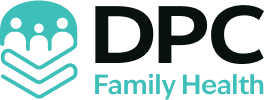How can patients combine the stability of direct primary care with the security of health insurance? This article outlines a clear path to merge these two models, explaining how a membership-based care approach can complement traditional coverage. It examines the distinct roles each model plays—routine primary care through subscription services and insurance for emergencies—offering a practical guide for optimizing overall health management. Readers will gain insight into the benefits and challenges of maintaining both options concurrently while enhancing their health experience.
Direct Primary Care Fundamentals in the Context of Health Insurance
Direct primary care clinics operate by bypassing traditional insurance billing for routine visits. They focus on personalized care, ensuring patients consistently receive undivided attention from their physicians. Routine services include lab tests—such as lipid panels and metabolic panels—with costs that remain clear and predictable, typically around $5.50 to $6 per test. Appointments are planned in 30-minute to one-hour slots, eliminating long waiting periods and streamlining access to care.
- Subscription fee structure
- Direct access to physicians
- Transparent lab pricing
- Timely appointment scheduling
This structure is built on predictable, subscription-based fees that separate primary care from the complexities of insurance reimbursements. The system allows patients to establish a direct relationship with their care providers while avoiding the administrative burden commonly associated with traditional insurance-based billing. By clearly outlining services and their respective costs, direct primary care models create an environment where care is both accessible and financially manageable.
Integrating a maintained health insurance plan alongside direct primary care leverages the strengths of both systems. The insurance plan serves as a protective measure against significant health events and catastrophic expenses. This dual method means routine primary care remains efficient and personalized, while insurance provides coverage for emergencies and specialized treatments. Combining these approaches allows families to benefit from streamlined everyday care without sacrificing comprehensive protection when needed.
Financial Model Breakdown: Comparing DPC Costs and Health Insurance Coverage

Direct primary care cost structures offer a predictable and transparent model by relying on fixed monthly fees that vary with age. Membership fees, ranging from lower amounts for pediatric patients to higher amounts for seniors, provide continuity and reliability in routine care. In contrast, traditional health insurance billing depends on variable claims and often involves significant administrative layers. This financial distinction helps families focus on routine, preventive care without worrying about open-ended costs, while reserving insurance for emergencies and specialist interventions.
- Age-based subscription fees
- Affordable lab test pricing
- Additional fees for extra services
- Transparency in billing
The predictable pricing in direct primary care extends beyond membership fees. Routine laboratory tests, for instance, are competitively priced at around $31 for a set of five tests, with each test costing approximately $5.50 to $6. Optional services, such as house calls, are available for an extra fee of $100 per visit. These transparent cost markers simplify financial planning compared to the unpredictability of traditional insurance reimbursements, which may involve hidden deductibles and co-pays. Detailed comparisons between these models reveal how streamlined billing can reduce stress associated with medical expenses.
| Service | Cost | Notes |
|---|---|---|
| Membership Fee | Varies by age | Fixed monthly subscription |
| Lab Tests | ~$31 for 5 tests | Approx. $5.50–$6 each |
| House Call | $100 per visit | Additional charge |
This comparative analysis clarifies that while direct primary care provides stable, subscription-based costs, traditional insurance plays a supportive role in handling unforeseen, high-cost health events.
Addressing Patient and Provider Concerns on DPC and Health Insurance Integration

Question: Can DPC be integrated with health insurance?
Direct Answer: Yes.
Providers and patients often ask if direct primary care can work alongside traditional insurance. Using precise reasoning, the answer is that DPC and health insurance operate on separate mechanisms—DPC handles routine personalized care while insurance covers emergencies and specialized services. This structure minimizes overlap and clarifies billing methods. Clear communication and defined service boundaries play a crucial role in maintaining confidence in both models.
- Clarification on coverage boundaries
- Cost transparency measures
- Communication protocols between care models
- Strategies for emergency coverage coordination
Both parties express concerns about service overlap and billing clarity. Providers stress the need for regular dialogue to explain which care elements fall under DPC subscriptions versus insurance claims. Patients value the direct, personalized attention from DPC, yet rely on insurance for unforeseen or high-cost incidents. By addressing these common questions through clear communication and consistent cost transparency, the integration fosters trust and reduces potential misunderstandings between the two payment systems.
Final Words
In the action, the article examined the core structure of DPC and its complementary role alongside traditional health insurance.
It detailed subscription fees, direct physician access, quick enrollment, and transparent pricing.
The discussion outlined practical strategies and key operational components while addressing common concerns.
The insights shared offer a clear guide to managing routine care separately from emergency coverage.
Can You Use DPC With Health Insurance? Here’s What to Know—patients and providers alike can move forward with confidence and optimism.
FAQ
Q: Does insurance cover Direct Primary Care (DPC)?
A: Direct Primary Care operates independently from insurance. DPC requires a separate monthly membership fee, while insurance remains useful for hospital visits, specialists, and emergencies.
Q: Can employers see when employees use DPC services?
A: DPC services maintain patient privacy. Employers cannot access medical records or service details since DPC operates outside traditional insurance networks.
Q: What are the main differences between DPC and health insurance?
A: DPC provides primary care through monthly subscriptions, offering direct physician access and transparent pricing. Health insurance covers catastrophic events, specialists, and hospital care.
Q: What services are included in DPC membership?
A: DPC memberships include routine check-ups, lab tests, primary care visits, and extended appointment times. Monthly fees range from $10-89 based on age groups.
Q: How do lab test costs work with DPC?
A: DPC offers transparent lab pricing, with basic tests costing $5.50-6 each. A standard panel of five tests costs approximately $31 total.
Q: How long are DPC appointments?
A: DPC appointments range from 30 minutes to one hour, reducing wait times and allowing comprehensive care discussions with physicians.
Q: How do patients combine DPC with traditional insurance?
A: Patients use DPC for routine primary care while maintaining high-deductible insurance plans for emergencies and specialized medical services.
Q: What is the enrollment process for DPC?
A: DPC enrollment takes three minutes online or 10-15 minutes in person, requiring basic information and selection of an age-based membership plan.

